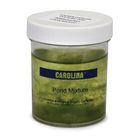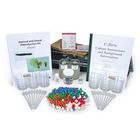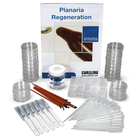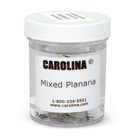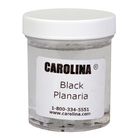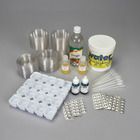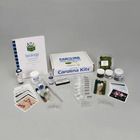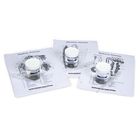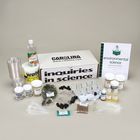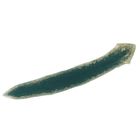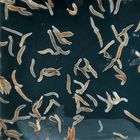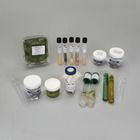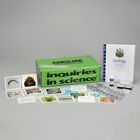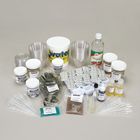Care Guide: Planaria
Living Care Information
Planaria
commonly known as
flatworm
Quick Start Information
The planaria will arrive packaged in a small jar or spring water. Remove and inspect the jar.
Unscrew the lid and rest it on top of the jar to allow air exchange that is vital to planarian survival.
Planarians foul their water rapidly. As long as the water in the jar remains clear and you plan to use the cultures that day or the next, little additional care is needed. If you plan to keep the planaria longer than a day or two, follow the additional care information below.
If the water in the shipping jar is at all cloudy, transfer the organisms to fresh, natural spring water immediately.
Keep the culture jar in a cool area (21° C or 69° F) out of direct sunlight.
Planaria are not suitable for culturing.
About the Organism
- Planaria reproduce both sexually and asexually.
- Planaria are an important model organism for aging research.
- Most planaria are aquatic, but there are some terrestrial species.
- Planaria are acoelomates, and their bodies have three germ layers.
- Some experiments have shown planaria to exhibit evidence of long term memory retrieval after regenerating a new head.
- Domain: Eukarya
- Kingdom: Animalia
- Phylum: Platyhelminthes
- Class: Turbellaria
- Order: Tricladida
- Family: Planariidae
- Genus: Dugesia
- Species: dorotocephala (brown), dactyligeria (black), morgani (white)
Preparation
Planaria are not suitable for long term culturing, but, with diligence, a culture can be maintained for several weeks. To do this, you will need a housing container, a food source and natural spring water. We do not recommend using tap water, but if no other water source is available, condition your tap water using a water conditioner.
Housing
You will need an 8" culture dish or another shallow, glass, plastic, enameled or stainless steel container. We recommend covering your container or providing hiding places, as planaria will naturally avoid light.
You will also need a source of natural spring water. Planaria need to have their water changed daily. Pour 2 to 5 cm of fresh spring water into the container.Use a dropping pipette to move the planarians. It may be necessary to carefully dislodge some individuals with your finger. Maintain at 21 to 23° C (70 to 73° F). Higher temperatures may damage them, but they will tolerate temperatures down to 9° C (48° F).
Feeding
Feed planarians once a week. Suitable foods include fresh beef liver, hard-boiled egg yolk, Lumbriculus, pieces of earthworm, crushed aquarium snails, etc. For up to 50 planarians, feed a pea-sized portion. After 30 minutes, transfer the planaria to a fresh container of spring water.
Maintaining and culturing
We do not recommend planaria for long term culturing.
Disposal
Carolina provides living organisms for educational purposes only. As a general policy, we do not advocate the release of organisms into the environment. In some states, it is illegal to release organisms, even indigenous species, without a permit. The intention of these laws is to protect native wildlife and the environment.
After completing classroom activities, we suggest that organisms be:
- Maintained in the classroom.
- Donated to another classroom or science department.
- With parental permission, adopted or taken home by students.
- Donated to a nature center or zoo.
- Disposed of humanely, as a last resort.
Biosafety
No biosafety information applies for this organism.
Video
No video or video playlist applies for this organism.
FAQs
Can I use tap water with planarians?
No. Tap water often contains metal ions that are detrimental to planarians.
Our planaria broke into bits. What happened?
During their sexual period, generally February or March, black and brown planarians are fragile. Do not handle or feed them during this time. They may deposit cocoons on the bottom of the culture dish. If maintained in fresh spring water, the cocoons will hatch in 2 to 3 weeks, giving rise to several small planaria.
Why have our planarians lost their heads?
The anterior end of the planarian is more sensitive to toxins; if a toxic substance is in the water, the anterior end will degenerate first. Use spring water, not tap water. If you are using spring water from a grocery store, there may be a problem with it. Locally collected spring or pond water may contain a pollutant, or your containers may have soap or detergent residue in them.
Which planarians should I use for regeneration experiments?
Black and brown planaria are your best choice. It will take them about 2 weeks to regenerate at room temperatures. White planaria will regenerate, but they take longer.
I ordered black planaria, but I got brown. Why?
Black planaria are difficult to find in the spring, so we may substitute brown for black.
Need help?
We want you to have a good experience. Orders and replacements: 800.334.5551, then select Customer Service. Technical support and questions: caresheets@carolina.com




